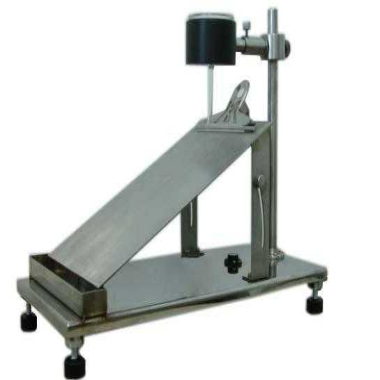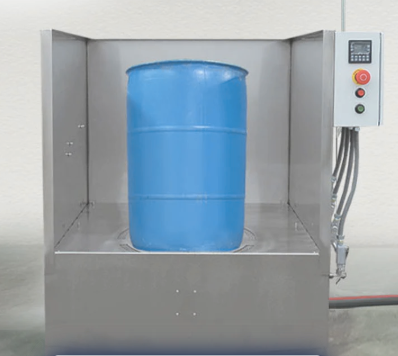Wash test equipment and consumables
Blog 4 6 月, 2025
So while wash tests can tell a retailer everything, it is important that these tests are carried out under standardized conditions to ensure consistent and reproducible results. To this end, various international standards have specified a number of parameters to ensure dimensional stability in washing/home washing. These parameters include:
1. type of washing machine – vertical axis, top-loading washing machine (e.g. Vortex M6) or horizontal axis, front-loading washing machine (e.g. Wascator CLS). These machines are highly standardized. Every functional parameter, from the physical dimensions of the washer and drum to how the washer controls the wash program, is specified in international standards. Any machine used for these standardized tests must comply with these parameters.
The most commonly used laboratory instruments, such as the Vortex M6 and the Wascator CLS, are programmable and can therefore be adapted to future changes in standards to reflect washing trends in domestic washing, such as low agitation, low liquid volume and low temperatures.
2. Drying equipment – Vortex M6D and Precision Tumble Dryer. Like their predecessors, these units are fully compliant with international standards in terms of drum size, size and number of lifting vanes, and drying rate. Again, the laboratory chose programmable equipment to cope with any future changes in standards and to increase versatility.
3. Detergents – Consumers have a wide range of choices when selecting detergents – optimized for low temperatures, with or without optical brighteners, with or without enzymes, and with or without softeners – making it difficult to standardize detergent use. In addition, some detergent formulations are more common in certain regions, such as AATCC reference detergents in the United States, IEC and ECE variants for the European market, JIS detergents for the Japanese market, and specialized liquid detergents for delicates.
What all of these reference detergents have in common is that they are designed to be representative of consumer detergents, not replicas. It is unlikely that one or both of the reference detergents will be identical to all existing commercial products. During the revision of the standard, the Committee will consider whether these formulations are still relevant and whether they need to be adapted as commercial detergent formulations change.
The changes implemented because the formulations are no longer representative can be seen in the deletion of ECE B and AATCC phosphate-containing detergents from the revision of the ISO 6330:2001 standard. In the years between the 1994 standard and the 2001 revision, commercial detergent manufacturers removed phosphates from their products. Phosphates have long been used to improve the efficiency of detergents, but once they enter the wastewater through the washing machine, they enter the aquatic system and become fertilizers for microscopic plants such as algae. These “algal blooms” cover the surface of the water, depriving the organisms below the surface of light and oxygen. The removal of these substances from household detergents mirrors the removal of these substances from household washing standards.
A recent example of this is the modification of detergent formulations, but also the retention of the original formulations as substitutes. Sodium perborate tetrahydrate is used as a bleaching agent in IEC and ECE detergents. The use of sodium perborate in household washing was banned or restricted in many countries many years ago; for example, the United States and Germany outlawed the use of sodium perborate at an early stage. Hydrogen peroxide, which is used in many products from detergents to cosmetics, is a source of hydrogen peroxide, which is a suitable bleaching agent for detergents when used with low-temperature bleach activators. However, this chemical has its own toxicity issues and is on the European REACH list.In 2021, in response to the trend away from sodium perborate in consumer detergents, ISO 6330:2021 lists sodium percarbonate as an alternative bleaching agent. This reflects the change in commercial detergents, but as both perborates and sodium percarbonate are used as a source of hydrogen peroxide, both are equally recognized as representative of household detergents, even though household detergents no longer contain perborates.
4. Washing of Complementary Fabrics – In a household laundry environment, it is rare that an item is washed alone. Typically, it is washed with many other items in a load that does not exceed the capacity of the washing machine being used. The other items can actually affect how the item performs in the wash. In the case of washing an item alone, agitation, liquid interactions, and wear and tear will all be different, and will likely deviate when compared to the wash cycle of a household washing machine. To compensate for this, and to do so in a standardized way, dimensional stability standards and most other post-wash performance methods require the use of make-up weight fabrics.
In the ISO 6330 standard, there are 3 types of weight replenishment products, sometimes referred to as “weight replenishment fabrics” or “accompanying wash cloths”. Which one is chosen depends on the composition of the test product. However, they are all used to make a test load of 2.0 ± 0.2 kg. This consistent load weight will produce consistent agitation levels in every wash and reduce variations due to decreasing or increasing load size. There are a number of other complementary weight fabrics associated with other domestic washing machine standards. the AATCC also specifies three different types of complementary weight fabrics, which differ from ISO complementary weight fabrics in a number of ways and should not be used interchangeably, but which serve the same purpose and are all used to achieve load sizes typically of 1.8 ± 0.1 kg.


